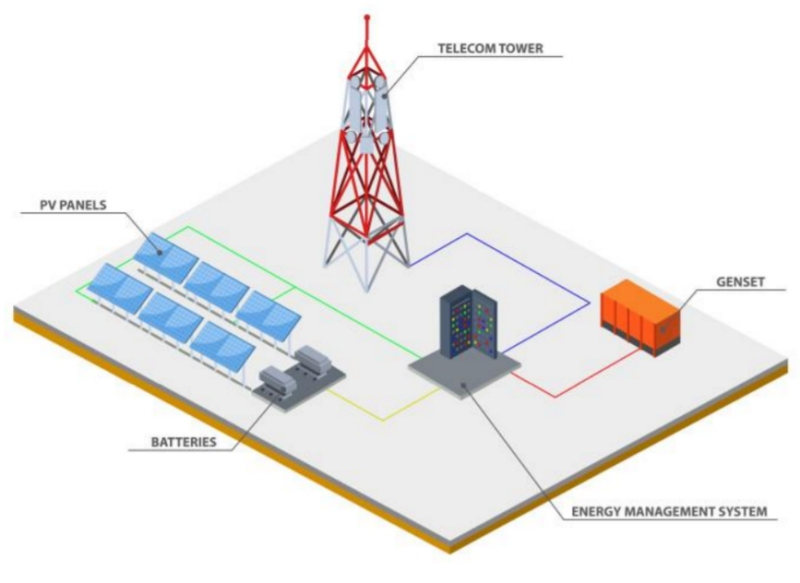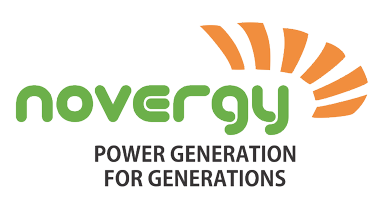When we talk about off-grid solar applications, one of the industries with massive power requirements is the telecom Industry. India is the second-largest telecom market in the world with 1.2 billion cellular users. This phenomenal growth is expected to rise further in the years to come, all thanks to the robust demand for cellular connectivity and its services. Telecom companies are continuously trying to find solutions to fight the competition by making their services affordable to the urban and rural populations.
With the increased demand for connectivity, telecom industry is penetrating new markets to maximize their teledensity in remote locations with mountains, forests and deserts, where grid power is a distant dream. In remote locations, companies rely either on the diesel generators or grids for electricity requirements. According to Greenomics, around 70% of the approximately 4,00,000 mobile towers in India face electrical grid outages because of no-grid or poor grid issues which increase the need for a backup power source.
Diesel generators are quite costly to operate and increase the cost of operations by more than 35%. They also harm nature by toxic CO2 emission in the atmosphere. Although, grid supply in remote areas is unreliable because of frequent power cuts and if it is reliable, then there are high electricity bills to follow.
India is the third-largest consumer of oil. Telecom industry of India consumes 2.5 billion litres of diesel and emits 6.6 million metric tons of CO2 annually. These stats make DG set an unattractive solution in the long run. To curb the menace, TRAI (Telecom Regulatory Authority of India) and DOT (Department of Telecommunication) has joined hands with a mission to reduce carbon emission by 2020.
Power contributes to 1/4th of total network cost, one of the crucial areas where telecom providers are struggling to cut costs. The increasing cost of electricity and lower affordability make telecom providers feel as if they are skating on thin ice. To combat these significant challenges, clean energy can be a pivotal component of telecom infrastructure. It is all set to play a vital role in the development of adequate infrastructure for energy-intensive industries.
Telecom providers have started embracing solar power as a reliable source of electricity. Solar energy is an economically feasible option in remote locations which are either off-grid or have to deal with unreliable grid or are battling high diesel consumption to run DG (Diesel Genset) to deliver reliable power to remote telecom infrastructure such as BTS (Base Transceiver Station) equipment, repeater stations, Towers, etc. Battery based system can save the high electricity bills and can provide a steady source of electricity throughout the day.

Benefits to areas with unreliable or no grid
Solar energy significantly reduces the consumption of diesel in remote areas where the grid is unreliable or areas that have no grid at all. It doesn’t let you depend on DG sets for power generation and it also decreases the DG maintenance costs. It diminishes the transportation cost of diesel to the BTS site. It helps in the reduction of green gas emissions and noise pollution. It broadens the operating range of the companies as well.
Benefits to areas with reliable grid
When you integrate seamless and efficient solar power to the telecom towers, you reduce the overall grid dependency for energy. If your towers are in a hot zone, they need air-conditioning all the time to function, the cooling load increases the demand for electricity and expenses. In such areas, solar energy helps offset peak load demand. It is also helpful in areas that have grid but there are always issues like low voltage, single phasing and fluctuations. Last but not least, it dramatically reduces the electricity bills of sites.
Novergy Telecom solutions
Novergy Solar has a proven record of being one of the best solar telecom solution providers for more than a decade. It offers a variety of Solar Telecom Solutions that can be used in remote locations giving telecom providers an opportunity to facilitate seamless and disruption-free services to their customers.
Novergy Telecom TC701 is an all-in-one unit. A complete solar, wind and DC power plant with in-built rectifiers. It helps in reducing the DG runtime by 50%. Its MPPT technology maximizes the production of energy from sun and wind. You can save fuel, power and DG maintenance costs through the advanced algorithm in the controller. The controller automatically operates the DG and the DC on/off operation is based on battery preset levels.
Our telecom solar solutions help in effective network operation with improved power quality and reliability. They use DC power generated from solar panels directly for DC loads and save on conversion losses. It reduces/eliminates the running time of DG and fuel consumption. You can achieve sustainability and green goals with fewer carbon emissions. You can also save on your taxes through accelerated depreciation policy and also earn great ROI on your investment.
Our solar systems have the highest efficiency technology in India. They come with a remote monitoring capability and ensure more power per square meter. Our systems have low degradation rates as compared to standard solar systems, ensuring trouble-free operation and peace of mind to our clients. Visit novergysolar.com to explore the entire range of Novergy telecom solutions.

